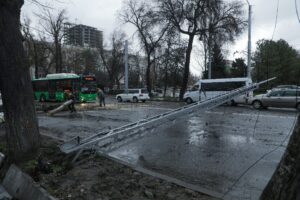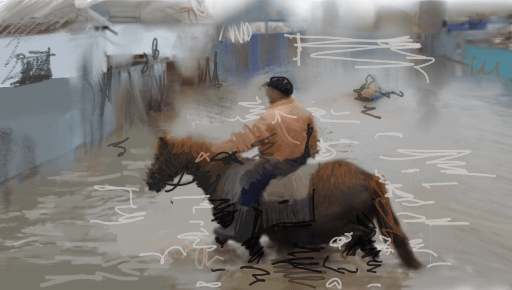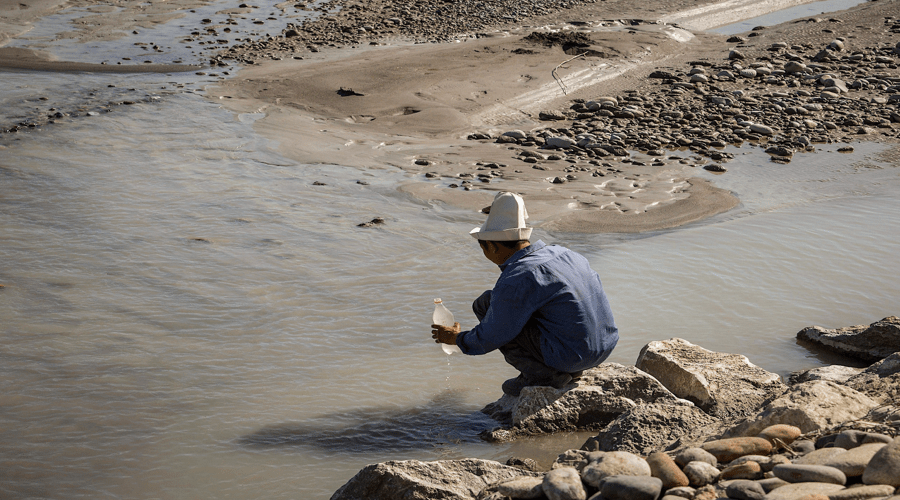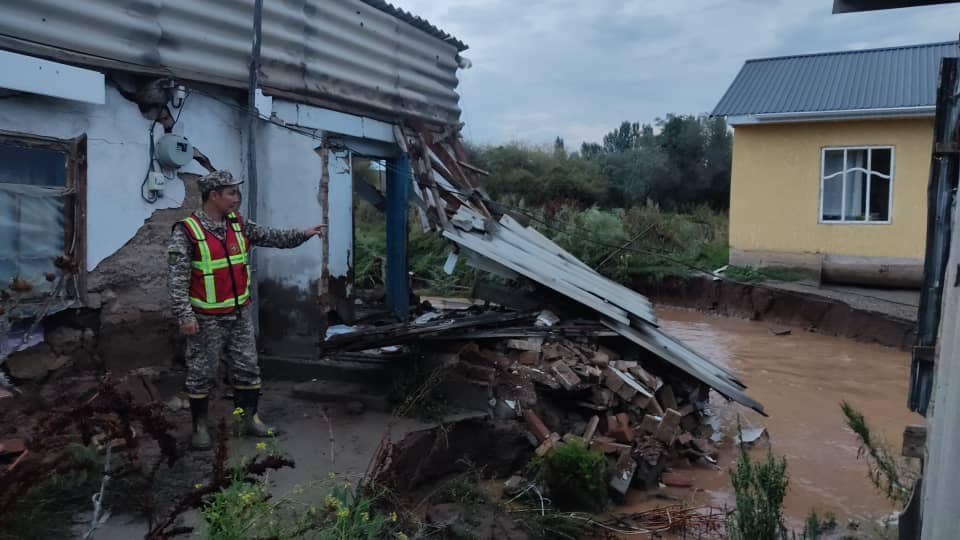Storms accompanied by heavy winds hit parts of Kazakhstan, Kyrgyzstan and Uzbekistan on the evening of March 28th. Heavy flooding in parts of western Kazakhstan forced the evacuation of at least 1,000 people, including hundreds of children, and a state of emergency has been declared in some areas.
Military helicopters evacuated people in distress and rescuers even used rubber dinghies to ferry camels to safety in the Shalkar district of the Aktobe region. Flooding caused widespread disruption after a river overflowed in the city of Aktobe, which has more than half a million residents.
Aktobe’s airport was forced to stop operations. In recent days, the flooding has damaged hundreds of buildings, submerged roads and caused power outages.
Video on social media showed people wading through water in the city streets and water sloshing across the floor of a bus filled with passengers. Aerial images showed some buildings completely surrounded by floodwaters in more isolated areas.
Fifty schools were prepared as temporary evacuation points in the city of Aktobe and rescue teams include volunteers, police officers and military personnel, regional emergency officials said on Instagram.
In Almaty, meanwhile, wind speeds of 24 meters per second were recorded, with the storm felling dozens of trees and tearing roofs from buildings.
“[There] was a very strong dust-storm and then a downpour with a thunderstorm. For our region at this time of year, this is an extremely rare phenomenon,” Almaty resident Arai Batkalova told the Times of Central Asia. “People were filming videos en masse and posting them on social media.”
In Bishkek, strong winds damaged eleven schools and eight kindergartens, and near-hurricane-force winds tore the roofs off at least fifteen residential buildings. Local residents reported dozens of fallen trees, some of which destroyed parked cars.

Bishkek; image: mchs.gov.kg
Emergency public-safety regimes were imposed in Bishkek and the Chui region. In these areas, storms damaged 154 buildings, and 24 local residents (including two children) were admitted to medical centers, according to the Kyrgyz Ministry of Emergency Situations. Four people were hospitalized with fractures and head injuries. “In order to study dangerous areas on the ground and determine the consequences, mobile groups of civil defense services were organized. It was ordered to involve all available utilities and special equipment as soon as possible,” rescuers noted.
Kyrgyz authorities are still calculating the damage from the storm. Utility workers spent all night repairing the storm’s aftermath: clearing roads, removing fallen trees, and repairing power lines.
“On the line of the municipal enterprise, Bishkeksvet, [by] morning [workers repaired] eight cases of broken power lines, as well as other consequences of the bad weather. Brigades continue [working]. By evening, the breaks [of power lines] will be repaired throughout the city,” Bishkek City Hall promised.
According to the Kyrgyz hydrometeorological center, strong winds were also observed in the south of the country in the Osh region, where wind speeds reached 15 meters per second.
Strong winds were also recorded in Uzbekistan’s capital, Tashkent, where its speed reached 17 meters per second. Authorities also reported fallen trees and roofs torn from buildings.









